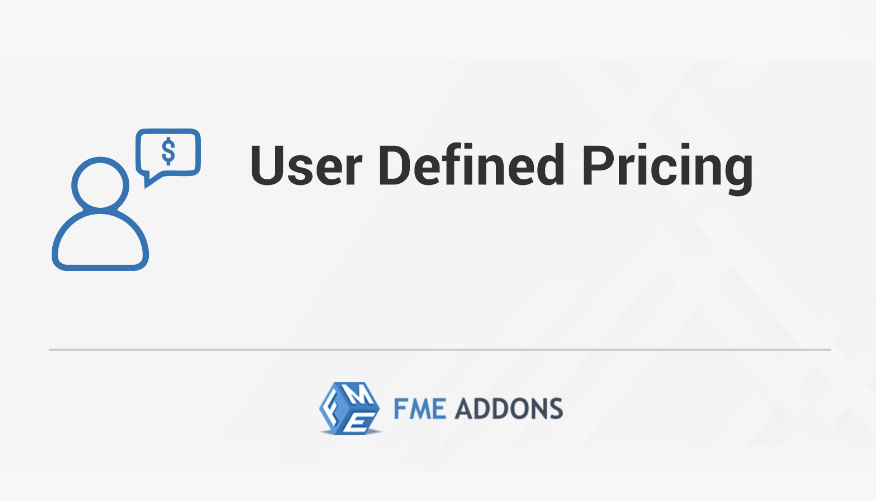Custom pricing is a powerful tool for WooCommerce store owners seeking to offer personalized or dynamic pricing based on customer segments, purchase volume, or specific products. WooCommerce’s flexible platform makes it possible to adjust prices for various scenarios, whether you want to reward loyal customers, offer bulk discounts, or set tiered pricing for specific items. Custom pricing can drive customer satisfaction, increase sales, and allow you to adapt your store’s pricing to align with market demands and customer expectations.
In this blog, we’ll cover the benefits of WooCommerce custom pricing, explore strategies to implement personalized pricing, and provide a step-by-step guide on setting up custom pricing for different conditions. With a well-configured custom pricing structure, your WooCommerce store can offer a tailored shopping experience that encourages customers to complete their purchases and return to shop again.
The Benefits of Custom Pricing in WooCommerce
Custom pricing can have several positive impacts on your eCommerce business, from improving customer satisfaction to increasing sales. Here’s a look at some of the major benefits:
- Enhanced Customer Loyalty
Custom pricing allows you to offer discounts or special rates to loyal customers, creating a sense of exclusivity and appreciation. Rewarding repeat customers with tailored pricing strengthens customer relationships, encouraging them to return. - Improved Conversion Rates
Personalized pricing can reduce cart abandonment by making customers feel they’re receiving a better deal. Offering discounts based on volume, user roles, or location can increase the likelihood of customers completing their purchases. - Encouraging Bulk Purchases
Volume-based pricing, where discounts increase with the quantity of products purchased, incentivizes customers to buy more in a single transaction. This is particularly beneficial for wholesale or B2B customers. - Targeted Promotions and Discounts
With custom pricing, you can tailor promotional campaigns for different customer segments. For instance, you could offer first-time buyers a discount to boost conversions or create special pricing for holiday promotions. - Improved Market Competitiveness
Custom pricing allows your store to remain competitive by adjusting prices based on the market, demand, or specific customer needs. This flexibility can be crucial for attracting price-sensitive customers and outperforming competitors.
Strategies for Implementing WooCommerce Custom Pricing
There are several ways to implement custom pricing in WooCommerce, depending on your store’s goals and the specific customer segments you want to target. Here are some effective strategies:
1. Role-Based Pricing
Role-based pricing allows you to offer different prices for distinct customer roles. For instance, you can set lower prices for wholesale customers, higher prices for retail customers, or exclusive discounts for VIP members. Role-based pricing is an excellent way to cater to specific groups while building loyalty among premium or frequent buyers.
2. Dynamic or Tiered Pricing
Dynamic or tiered pricing adjusts the cost of a product based on quantity purchased or customer behavior. This is ideal for stores that want to encourage bulk purchases, as it provides customers with a lower per-unit price when they buy in larger quantities.
3. User-Specific Pricing
For stores offering bespoke products or catering to large clients, user-specific pricing is valuable. This strategy allows you to set unique prices for individual customers or companies based on pre-existing agreements or purchase history. This is especially common in B2B eCommerce, where pricing can vary widely based on negotiation.
4. Category-Based Pricing
Category-based pricing allows you to adjust prices for specific product categories. For instance, you could offer lower prices for a clearance category or raise prices on a premium product category. This approach provides flexibility when running promotions on particular types of products.
5. Cart-Dependent Pricing
Cart-dependent pricing involves applying discounts or custom prices based on the contents of a customer’s cart. You could, for example, provide a discount if a customer buys a certain combination of products, creating an incentive for customers to purchase complementary items.
Setting Up Custom Pricing in WooCommerce
While WooCommerce’s core settings offer limited customization for pricing, you can achieve advanced custom pricing with the help of plugins like WooCommerce Dynamic Pricing or WooCommerce Role-Based Pricing. Here’s how to set up custom pricing for different conditions:
Step 1: Install a Custom Pricing Plugin
Begin by choosing and installing a plugin that offers custom pricing options. Plugins like WooCommerce Dynamic Pricing & Discounts or WooCommerce Role-Based Pricing are excellent choices, as they provide a wide range of pricing rules and customization options. Install and activate the plugin from your WooCommerce dashboard or upload the plugin manually.
Step 2: Configure Role-Based Pricing
Once the plugin is activated, you can set up role-based pricing:
- Go to the plugin settings, usually located under WooCommerce > Settings > Pricing or a similar location.
- Select Role-Based Pricing and define the roles that will receive custom prices (e.g., wholesale, retail, VIP).
- Set the specific prices or discounts for each role. For example, you might offer a 10% discount for wholesale buyers or a 5% discount for returning customers.
- Save the settings and test to ensure each customer role sees the correct pricing on product pages and at checkout.
Step 3: Set Up Volume-Based or Tiered Pricing
Next, configure volume-based pricing to encourage bulk purchases:
- Navigate to the Volume Pricing or Tiered Pricing section within the plugin settings.
- Create pricing tiers based on the quantity purchased. For instance, you could set a 5% discount for purchases of 10-20 units, a 10% discount for 21-50 units, and a 15% discount for 51 or more units.
- Apply the rules to specific products or product categories, and save the settings.
This pricing structure will display discounted prices based on quantity, making it clear to customers that they can save by buying more.
Step 4: Configure Cart-Dependent Pricing
To offer custom pricing based on cart contents:
- Go to the Cart Pricing or Cart-Based Discounts section in the plugin settings.
- Set rules for cart-dependent discounts, such as applying a 10% discount if a customer purchases two or more complementary items.
- Specify the conditions under which these discounts apply, such as product combinations, cart subtotal, or customer location.
- Save and test the settings to ensure the discounts are correctly applied at checkout.
Step 5: Apply User-Specific Pricing
For one-on-one or business-to-business customer agreements, set user-specific pricing:
- In the plugin settings, find the User Pricing or Custom Pricing section.
- Search for a specific user by name or email and set a unique price for products they frequently buy.
- Save the pricing settings, and verify that the user sees their custom prices when logged in.
This feature can be highly effective for retaining high-value customers by offering them tailored pricing options.
Best Practices for Custom Pricing in WooCommerce
Custom pricing can enhance your WooCommerce store when applied strategically. Here are a few best practices to ensure success:
1. Regularly Review and Update Pricing Rules
Custom pricing strategies should be revisited regularly to ensure they remain effective and aligned with your business goals. Monitor customer behavior and adjust pricing as needed.
2. Use Clear Messaging for Discounts
Communicate discounts and custom prices clearly on product and checkout pages. Transparent messaging ensures that customers understand the benefits they’re receiving, helping build trust and improving the shopping experience.
3. Combine Custom Pricing with Loyalty Programs
Combining custom pricing with a loyalty or rewards program can enhance customer loyalty. Offer custom prices to customers who accumulate points, make frequent purchases, or belong to premium membership groups.
4. A/B Test Your Pricing Strategies
Experiment with different pricing rules to see which approach yields the best results. For example, test different discount levels for volume-based pricing to determine the most effective discount rate for driving bulk purchases.
Examples of Custom Pricing Rules in WooCommerce
- Wholesale Pricing for High-Volume Customers
Provide discounts for wholesale customers by setting role-based pricing that automatically applies lower prices to large-quantity purchases. - First-Time Buyer Discount
Set up a custom pricing rule to offer a 10% discount to new customers on their first purchase, increasing the likelihood of conversion. - Bundle Discounts for Complementary Products
Offer a bundled discount when customers purchase specific items together, encouraging larger orders and increasing average order value. - Location-Based Pricing for International Customers
Adjust prices based on the customer’s location, making products more accessible to international customers who may face higher shipping costs.
Conclusion: Elevate Customer Satisfaction with WooCommerce Custom Pricing
WooCommerce custom pricing allows you to offer targeted discounts and incentives that can make your store more appealing to a broad audience. By implementing custom pricing rules based on user roles, order volume, and other factors, you can create a more personalized shopping experience, boost customer loyalty, and increase sales.
With the right custom pricing strategy and a reliable WooCommerce plugin, your store can take advantage of the flexibility to meet customers’ needs and offer compelling value. Invest in custom pricing today, and see how it transforms the way customers engage with your store.



